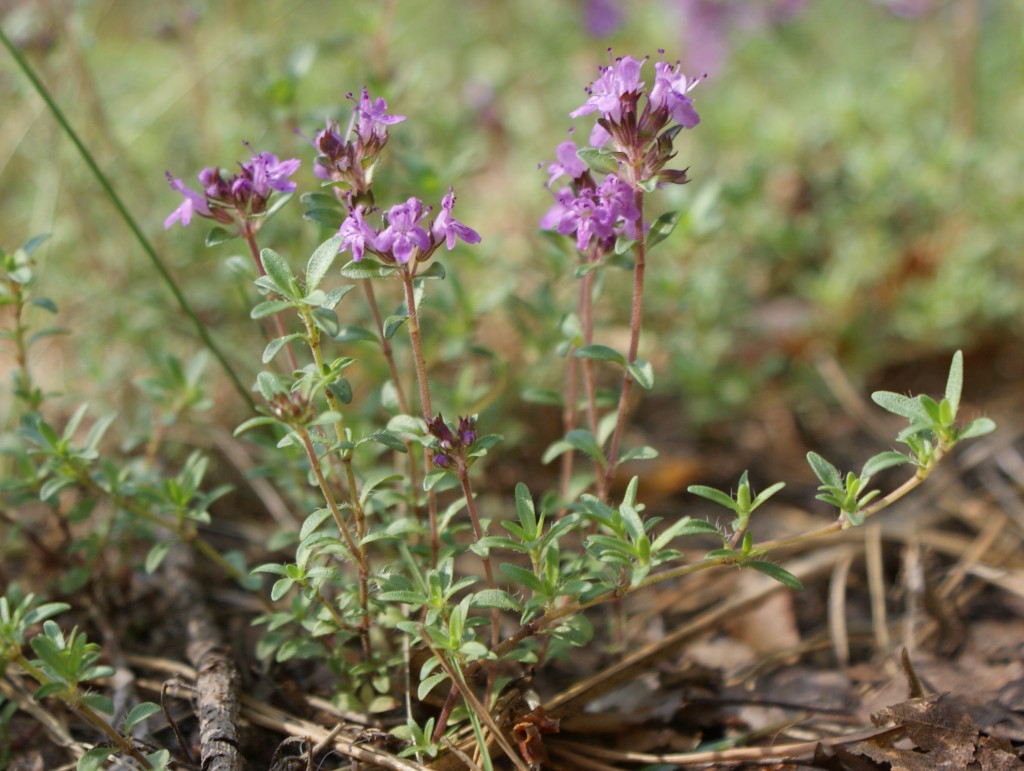
Thyme is a perennial flowering plant that is ubiquitous in the wild in the European part of Russia and Siberia. In people, this plant is called thyme. He is revered for the healing properties and unsurpassed beauty of a flowering shrub.
Planting and caring for thyme in the open ground is a simple and rather fascinating activity. In a relatively short time and spending a minimum of effort, you can grow a beautifully flowering plant, which also helps to cure a cough and calm the nerves.
Content
Biological characteristics of the plant
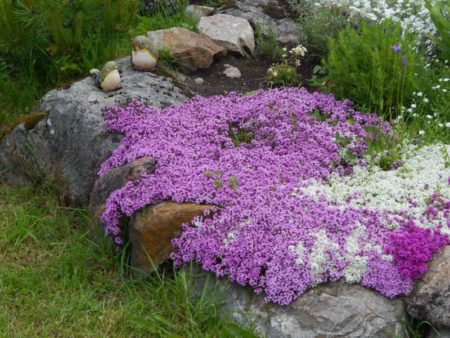
Creeping thyme (“Bogorodskaya grass”) belongs to the group of perennial herbaceous plants of the family Iasnotkovye.
This is a miniature bush with a height of 15-20 centimeters, with creeping (creeping) stems that grow back to create a picturesque carpet. The stems at the bottom are woody. The shape of the plant is often petiolate - lateral stepsons grow on one shoot, on which flowering will later begin. The leaves are ovoid, bright green, medium size, up to one centimeter long. Along the edge, the leaves have deep even cloves, cutting the plate almost in half.
Thyme blooms in small, pale purple flowers that gather in large capitate inflorescences. Volumetric loose inflorescences are located at the very top of the stems. After flowering, the fruit remains, which consists of four medium-sized nuts. Thyme has a strong aromatic odor. It blooms in June and July.
The healing properties of thyme
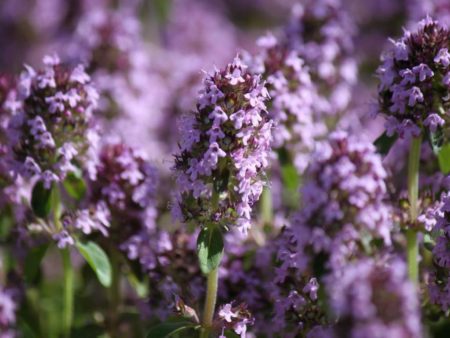
Due to the rich chemical composition, thyme has a therapeutic effect on the human body. The herb of various types of thyme is used for colds. Herbal decoctions are drunk with cough, bronchitis and other respiratory diseases. In addition, the grass has a disinfectant, anthelmintic and antispasmodic effect. It helps to cope with fever and cramps.
In thyme, for medical purposes, the ground parts of the plant are used, which are collected during intensive flowering. Only green branches are cut, bypassing lignified areas.
Dry collection in the shade in a room with good air circulation. The stems, ready for the preparation of medicinal tinctures, must completely dry. You can understand about readiness by breaking a branch - if it breaks off with a crunch, then the raw material is ready.
Not only decoctions are prepared from thyme herb. Dried flowers and leaves are part of many medicines. In addition, thyme herb is used in the alcoholic beverage industry, and essential oil is used in soap and perfumery.
Thyme Composition:
- essential oil;
- mineral salt;
- resin;
- various acids;
- flavonoids.
Varieties of thyme
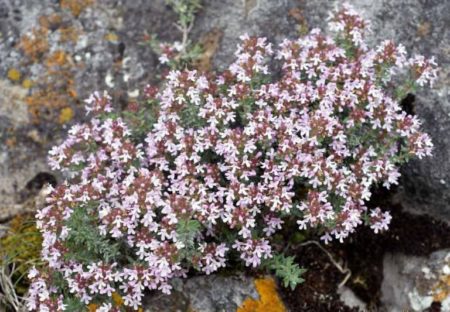
Thyme has several varieties that are used both for medical purposes and for decorating the garden. The most popular varieties:
- Marshall - a shrub up to 30 centimeters high. Blossoms with air corollas of pale purple. Prefers rocky slopes.
- Talieva - a variety named after the Soviet botanist Valery Taliev. The plant is often found in river valleys. Blooms all summer with light blue flowers-baskets.
- The Silver Queen is a 20-centimeter shrub that grows with silver leaves topped with dense lilac flowers.
Creeping thyme is part of the group of thyme, among which are also found:
- Common thyme is a highly branched dwarf shrub. Small green leaves are covered with fluff. It blooms with white or lilac flowers.
- Lemon-smelling - known for a pleasant aroma with notes of lemon. Egg-shaped leaves are colored yellow-green.
- Early - blooms in the first half of summer. The shrub covers large surfaces with its shoots. A small scattering of flowers creates a bright purple carpet.
Creeping thyme: planting and care
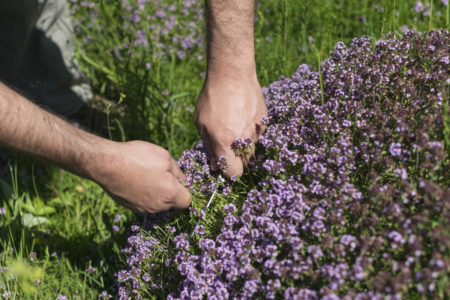
Thyme is grown as a one-year or three-year crop. It favorably develops on well-lit even areas with fertile soil cleared of weeds. It is best to place it on the southeast side of the site near a house or fence, where there will be no drafts.
Landing
It is possible to grow creeping thyme from seeds. They are planted in the spring, when the earth warms up to 13 degrees. Sowing of seeds is carried out on the surface of the soil, without deepening. Sprinkle the seeds on top with a layer of sand. Sand will resist the accumulation of water on the surface of the soil, as well as nourish the seeds with the necessary mineral components. If frost or precipitation is expected in the region, it is preferable to cover the bed with film material so that the thyme is warm. So it will grow faster.
After 2-3 weeks, when the seedlings thoroughly grow, the bed is thinned out. A minimum of 30 centimeters should remain between the plants.
In open ground, planting can also be carried out by the seedling method. Seedling is carried out in early March in seedling boxes. The conditions for sprouting thyme are no different from growing any other seedlings. Plants are demanding on watering, airing, comfortable temperature and long-term lighting. During the day. After a month, the seedlings begin to temper, taking out for a short time on the veranda. In mid-April, they carry out planting and subsequent care in the open ground. However, until early May, plantings should be kept under temporary shelter.
Care
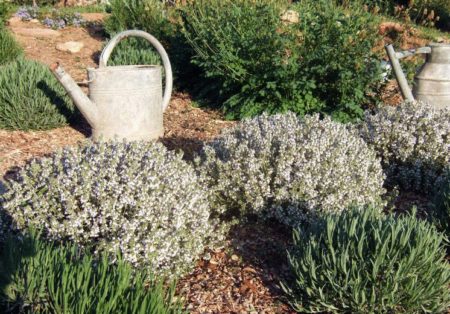
Thyme is very easy to care for. Care at home for newly planted plants comes down to sparse watering and pruning. Fertilizing for thyme is not a matter of principle, since the roots consume nutrients rather slowly, so the chemical elements introduced during planting will last at least two years.
Pruning. Immediately after landing on the bed, pinch thyme plants. This manipulation will contribute to the growth of numerous lateral shoots that will form a lush crown. The plant must be pruned regularly to form a beautiful shape and direct shoots in the desired direction of growth. Perform this procedure in early spring or autumn, when leaf fall ends. Cut the shoots to the ground. This will allow the plant to grow more magnificent and mighty shoots by the next season.
Watering. Thyme calmly endures weeks of heat, not demanding on water. Arrange irrigation of thyme is not more than once every two weeks. With frequent rainfall, watering is completely stopped.
Tillage. Under thyme, the earth should always be clean, without weeds. Since the culture grows rather slowly, any weed that appears will take away food from the thyme, respectively, it will completely stop growing.It is important to carry out loosening after watering so that there is constant access to fresh air to the roots. When growing perennial thyme, it is necessary to cover the plant for the winter. You can use straw, peat or sawdust for these purposes.
Fertilizer. Thyme is not demanding on top dressing if the soil during planting was well seasoned with organic matter and mineral fertilizers. Once a year, usually in early spring, nitrogen-containing compounds, such as urea or ammonium nitrate, are added to the soil. In the second year, the soil is supplied with potash and phosphorus fertilizers. Thyme responds well to dressing with ordinary wood ash, which saturates the soil with minerals and at the same time deoxidizes the soil.
Diseases and Pests
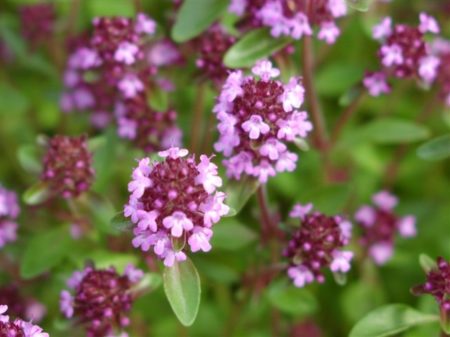
Thyme is a very resistant plant to diseases and pests. Infections very rarely affect the bushes, which can not be said about insects. In fairness, it should be noted that with little exposure to the pest, thyme does not lose its attractive appearance and almost never dies. Most often, pests such as weevil, aphid, sand lark, meadow moth attack the grass. Of all, the butterfly moth butterfly can be especially harmful. With strong reproduction, it attacks the stems and leaves of the plant, leaving holes in the locations. The ground part of thyme is also struck by a slug - a black gluttonous bug.
At the first signs of pests, insecticides are used (Akarin, Actellik, Intavir and others).
Breeding methods
Breeding thyme is possible using:
- seed;
- cuttings;
- dividing the bush into parts.
Seed propagation
Thyme can be propagated using seeds, however, this method is not the most successful, all because the seeds do not germinate well in open ground. Most often due to a lack or excess of moisture, temperature extremes, frost, cold soil. But, if there is no choice, then you can try this method. So, the principle of seed reproduction of thyme:
- After flowering on the stems of thyme, fruits are formed - boxes with seeds. These seeds are carefully removed from the "house", sprinkling on a paper sheet.
- They are laid out on paper with a thick layer and left on the windowsill to dry in the sun. Completely dried, they will acquire a golden hue.
- Seeds are stored until spring in a paper envelope in a dry, dark place.
- If it is decided to grow thyme in seedlings, then the seeds are sown at the end of winter, if unpaved - in May.
Cuttings
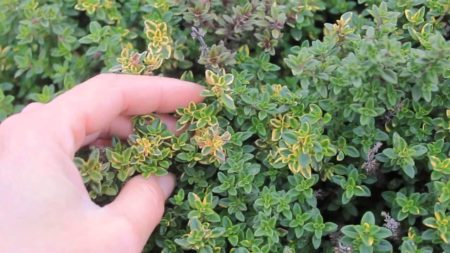
For pruning, the strongest and most healthy cuttings (in this case, twigs) are selected during pruning. They are cut close at the base, where the site is already lignified. Next, cuttings are made:
- twigs put the lower end into the water for 2-3 days, so that the kidneys swell and open.
- Then the branches are transplanted into the soil substrate, enriched with minerals. Several branches can be planted in one seedling container.
- If weather permits, then cuttings can be made on a bed under a greenhouse. To do this, dig a small trench and plant thyme branches there.
- Before planting, all leaves and stepsons are removed from the branches.
- Cuttings are planted in the ground shallowly, about 2-3 centimeters below the surface of the earth.
- Cuttings root well in a warm, sunny place. If they grow in a nursery, then the container is placed on the windowsill, if on the street - they make a greenhouse.
- The first roots will appear a few weeks later. It is enough to root branches only after 5-6 weeks. Only then can thyme be planted in a permanent place.
Bush division
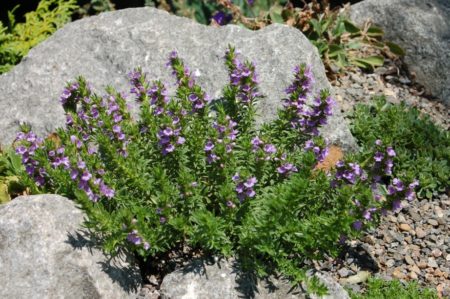
This is a less effective method of reproduction. This is due to the fact that the plant tolerates the plot very poorly.However, if other methods are not available, then you can resort to dividing the bush. True, not every plant is suitable for this procedure: adults with a well-developed root system of the plant take root better. It is preferable to divide a three-year bush. Reproduction Technique:
- A well-rooted bush is completely dug out of the ground.
- The roots are cleaned of soil lumps.
- The bush is divided in half so that each part has a piece of the uterine root.
- They dig two shallow landing pits.
- Supply each of them with organic fertilizers.
- The roots are watered with a manganese solution, then soaked in a growth stimulator.
- Each bush is planted strictly vertically, covered with earth.
- Top soil is compacted, watered.
Thyme in Landscaping
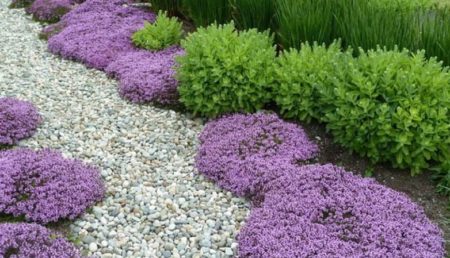
Cultured thyme is used with pleasure as decoration of borders, frames of group flower plantings. Since thyme is a dwarf plant, they usually place it on the lower front tier of the front gardens. The plant looks great where it creates an atmosphere of wildlife, that is, on the slopes of the alpine hills, in rockeries and rocky gardens. In combination with a stone landscape, thyme with its many delicate flowers looks very organic. A simple grass erases the boundaries, softening the hardness of the stone. Creeping varieties require a lot of free space, so it is preferable to plant them in open areas at the border of vegetable beds, next to fruit trees. A composition of several types of thyme looks very tender. Whatever varieties you plant, they will always be combined with each other thanks to discreet floral shades. Mixborder will look spectacular even after the plants bloom.
Combination with other colors
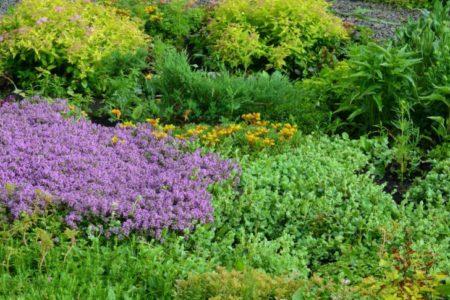
Thyme is surprisingly combined with almost all colors. Its bright green foliage harmoniously contrasts with lush and juicy peonies, bright chrysanthemums, restrained roses, charming tulips, corner lilies and other flowers. In group plantings, creeping thyme plays the role of a variegated carpet, over which tall flower cultures are majestically towering. Not bad thyme is combined with conifers, whether it is perennial spruce or undersized juniper.
Reviews
Maria
Thyme is best known to me for its healing properties. This odorous herb helps with coughing. Therefore, in our house there is always a bag of dry grass, which we brew as soon as one of the family members begins to get sick. Mom said that before newborn babies were bathed in water, into which thyme was added. It turned out that many thyme is grown in the garden as a flower crop. Indeed, the plant is not moody. Not “offended” by the lack of water, grows well in the shade. In general, if you want to decorate your garden, then thyme is the best candidate for this.
Elizabeth
We live in the countryside, so the fields around our village are completely covered with thyme. We grow different species, but more beautiful than all creeping. It spreads a carpet on the slopes of the hills, grows beautifully along the banks of small rivers. In the middle of summer, everything around is covered with small lilac flowers that exude a strong herbal aroma that is felt even at home. I heard that landscape designers have this grass in high esteem. It is not surprising, because thyme is such a viable weed that it can tolerate multi-day drought, the invasion of all sorts of pests. And her illnesses do not concern her at all. In fact, very good grass, and most importantly useful.
Conclusion
Thyme is an amazing, versatile plant.Possessing medicinal properties, it is also endowed with magnificent decorative qualities, as evidenced by many photos of summer residents who already have the pleasure of observing in their garden plots the splendor of fluffy bushes, smelling of a pleasant spicy aroma. Planting thyme and caring in the open ground is even within the reach of a novice gardener. The plant is unpretentious to the conditions of growth and care, and therefore you can get a motley flower bed from this undersized shrub without much trouble.

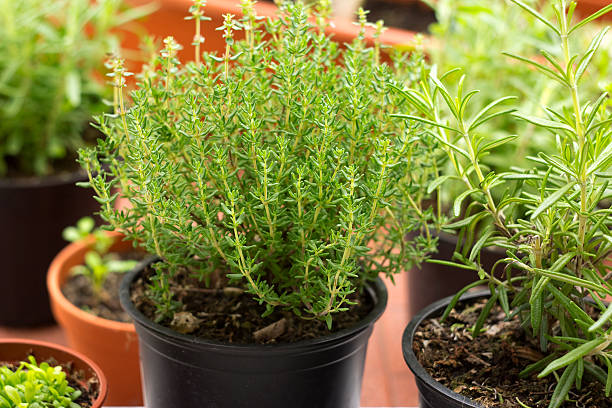 How to grow thyme from seeds at home on a windowsill in a pot
How to grow thyme from seeds at home on a windowsill in a pot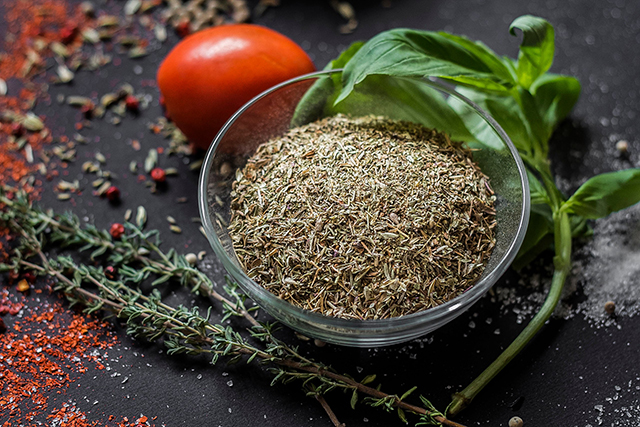 How to grow thyme from seeds in open ground with a photo
How to grow thyme from seeds in open ground with a photo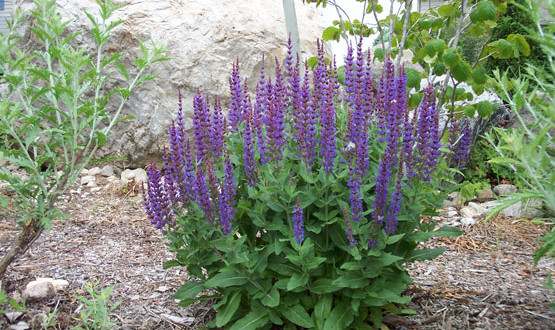 How to grow thyme in open ground near Moscow
How to grow thyme in open ground near Moscow